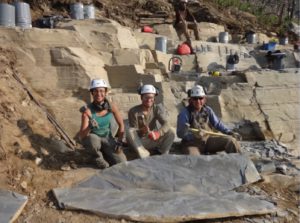THE EXPLOSION OF LIFE
Life began very early in Earth’s history, perhaps nearly 4 billion years ago, but complex life, animals that we might recognize, literally exploded onto the scene in the early Cambrian time, some 500+ million years ago. Before that were mostly single-celled forms of life. While we do not know why this “Cambrian Explosion” (of life) occurred, it is one of the most important and dramatic events in earth’s long history. Without it having occurred we would not be here. But finding evidence of this early explosion of complex life in rocks that are over a half billion years in age is a rare, nearly miraculous event. One of those extremely rare places is the Burgess Shale in the Canadian Rockies.
We will have a chance this Tuesday to travel both in time and space to one of the world’s most significant records of ancient life. Paleontologist Arvid Aase will take us in time back to the middle Cambrian of 508 million years ago, to a place that is now British Columbia in the high and beautiful Canadian Rockies but was once a muddy sea floor populated by the strange and beautiful creatures of the Burgess Shale. He will share with us his experience being part of a paleontological team that has explored a high mountain quarry that offers us incredible and unique insights about the beginnings of complex life on our planet.

